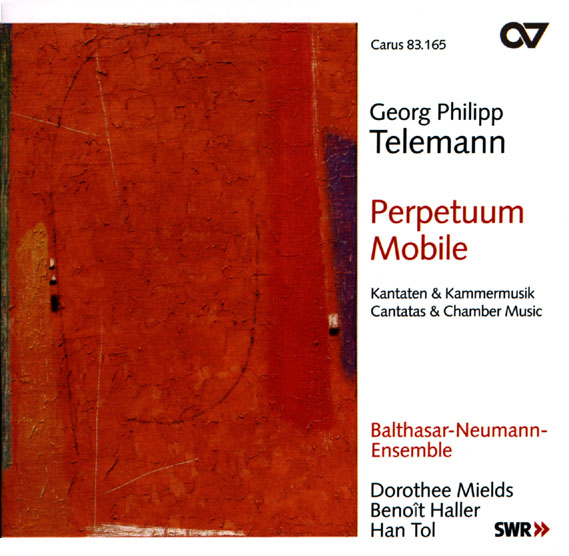
Kritik von David Vernie, 12.1.2005
Soprano Dorothee Mields sings like an angel, tenor Benoît Haller's voice is warm and agile and melodious, the instrumental soloists are all world-class, and their ensemble colleagues are equally informed technically and in sync musically. And the sound is a perfect balance of intimate setting and room resonance that allows the uninhibited natural timbres of voices and instruments to be heard. And to all of this, we add the benefit of some terrific Telemann works that few listeners will have heard--and that even experienced Baroque fans will not immediately recognize as coming from this composer.
Of course, Telemann was an exceptional craftsman, inventive contrapuntalist, and master of instruments, voices, and virtually all the musical forms of his day--but as demonstrated here (and on several other recent recordings of his vocal works), he had gifts for which he rarely gets full credit, certainly not as long as Johann Sebastian and George Frederic hog the attention of performers, listeners, and record companies. One of Telemann's "problems" perhaps is that he wrote "too much" music, much of which remains in manuscript, and he wasn't lucky enough to have the esteemed advocates that later championed the work of the other two masters. Indeed, Carus claims four of the six works on this program are world-premieres, and when you hear them--three cantatas and the Overture "Perpetuum mobile"--you can only wonder how much more material of this high quality is waiting to join these.
Of all the details we could discuss regarding the music, the most striking here is the affirmation of Telemann's facility for melodic invention and, like Bach, knowing how to give it color and finesse with appropriate instrumental accompaniment. Just listen to the Passion cantata, for soprano, viola concertante, and continuo (an oboe and violin were added later to enhance the tutti sections), and you'll be impressed not only with the sophistication of the melodic interaction between viola and voice and the interest created by these two unique timbres, but also with the sheer virtuosity of the viola part and how easily it fits with the singer's lines. The A minor Quartet for recorder, oboe, violin, and continuo is another pleasing mix of timbres--and the short third-movement Adagio is striking for its lovely overlapping lines. The final Vivace features fearsome virtuoso sections for each instrument, each passage totally different in character from the others.
Yes, there's enough great--and remarkably varied--music here to keep Baroque listeners interested and involved for many hours. And speaking of variety, the "Perpetuum mobile" Overture, so-named for one of its movements, is a delightful series of dance movements, the most memorable being the Sarabande, with its decorative melodic material and unusual (and very catchy) rhythmic divisions, and the ferocious Tourbilon (whirlwind). Not to be missed!
David Vernier [1/12/2005]